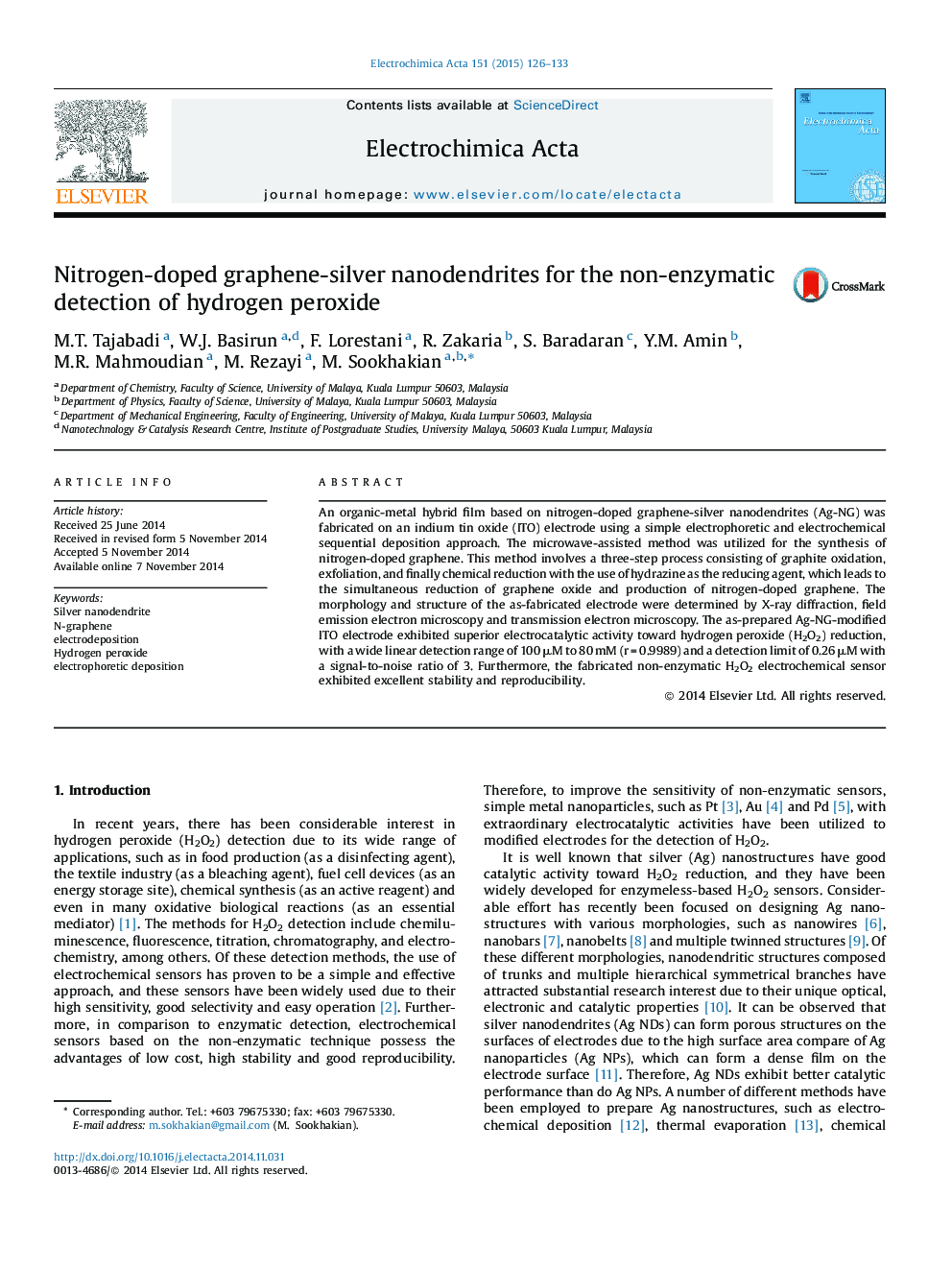| Article ID | Journal | Published Year | Pages | File Type |
|---|---|---|---|---|
| 184818 | Electrochimica Acta | 2015 | 8 Pages |
•N-graphene/Ag nanodendrities by electrophoretic and electrochemical deposition.•Support of N-graphene shows efficient electrocatalytic activity toward H2O2 reduction.•The fabricated non-enzymatic H2O2 electrochemical sensor improved in the presence of Ag.
An organic-metal hybrid film based on nitrogen-doped graphene-silver nanodendrites (Ag-NG) was fabricated on an indium tin oxide (ITO) electrode using a simple electrophoretic and electrochemical sequential deposition approach. The microwave-assisted method was utilized for the synthesis of nitrogen-doped graphene. This method involves a three-step process consisting of graphite oxidation, exfoliation, and finally chemical reduction with the use of hydrazine as the reducing agent, which leads to the simultaneous reduction of graphene oxide and production of nitrogen-doped graphene. The morphology and structure of the as-fabricated electrode were determined by X-ray diffraction, field emission electron microscopy and transmission electron microscopy. The as-prepared Ag-NG-modified ITO electrode exhibited superior electrocatalytic activity toward hydrogen peroxide (H2O2) reduction, with a wide linear detection range of 100 μM to 80 mM (r = 0.9989) and a detection limit of 0.26 μM with a signal-to-noise ratio of 3. Furthermore, the fabricated non-enzymatic H2O2 electrochemical sensor exhibited excellent stability and reproducibility.
